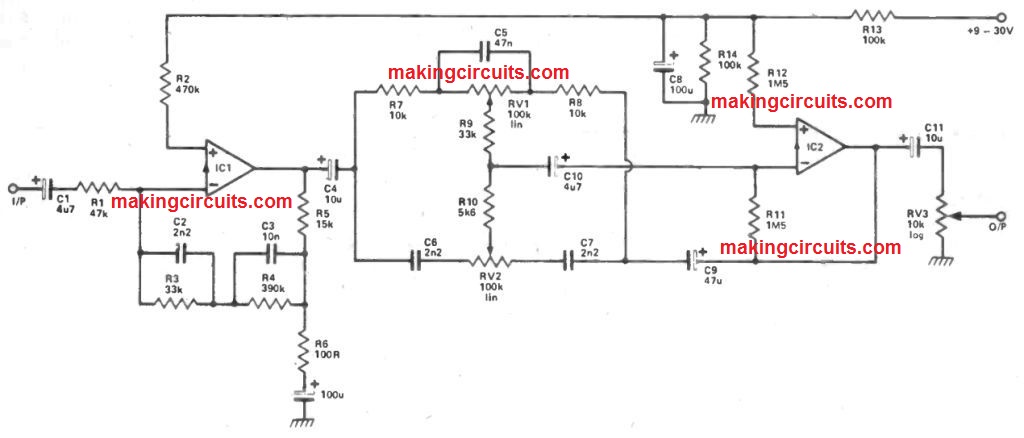The circuit discussed is created to work like an universal preamplifier, by adjusting the value of one element, R1, you are able to look after the entire range of inputs explained above.

Input signals are combined to the base of Q1 through the isolating capacitor C1 R1 suppresses the input impedance to the right value to match the specific input signal.
R2 and R3 bias Q1 which can be utilized in the most popular emitter mode. Large local AC and DC feedback is presented through R5 which describes the gain of the stage at 20dB.
To overcome noise an MPS6515 is employed at this point controlled with a low collector current, 50uA.
The amplifier's output stage is the darlington pair Q2 and Q3, output signals being extracted from around R7, R8.
R1 needs to be dependant upon experiment but are generally at first identified simply by using a 470R preset in the R1 placement and modifying this for the best possible audio quality by ear.
Single Chip Preamplifier Circuit
The single chip preamplifier circuit presented uses the four Norton op amps comprised during an LM3900 to generate a superior quality stereo preamp, suitable for standared preamplifier application.

IC1 is utilized within the inverting mode. Signals through the cartridge usually are fed through the obstructing capacitor and R1 to the inverting input.
R1 describes the input impedance and offers the correct controlling for the input signal. R5 and R6 explain the midband gain of the stage whilst the network R3, R4, C2 and C3 supply the needed RIAA equalisation.
From here the equalised signal is fed to a common Baxendall tone control network constructed about IC2.
This needs minor comment while it needs to be observed that individual volume controls are used for every channel.
Not only does this minimizes crosstalk amongst channels but in addition works more affordable in that only a couple of single gang potentiometers are employed.
Efficiency of this single chip preamplifier circuit is decent with general distortion lower than 0.1% and a S / N ratio of -67db without a load, ref 500 mV out.
I am living in London n17 9xu my telephone number02039717235 my name is Clyde Lowe leading to 2000 and i have 22 exam i have been going to college since 19 95 my first exam was percentage fraction division and five years after give i man ah exam